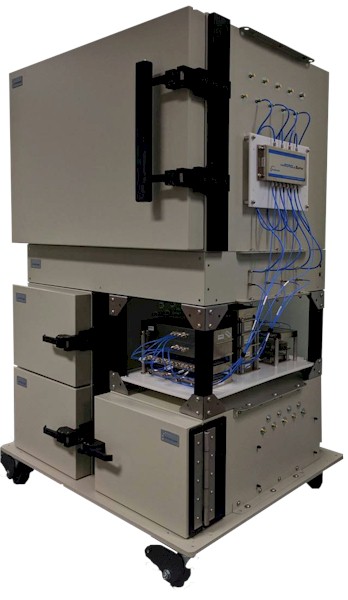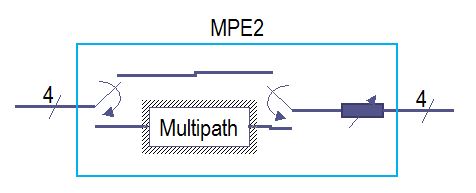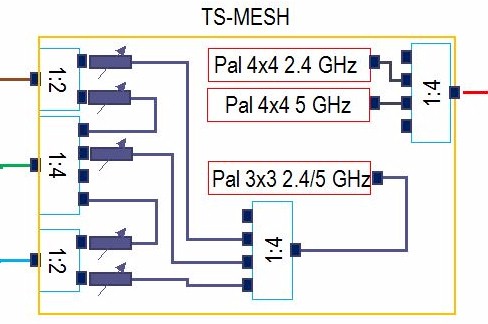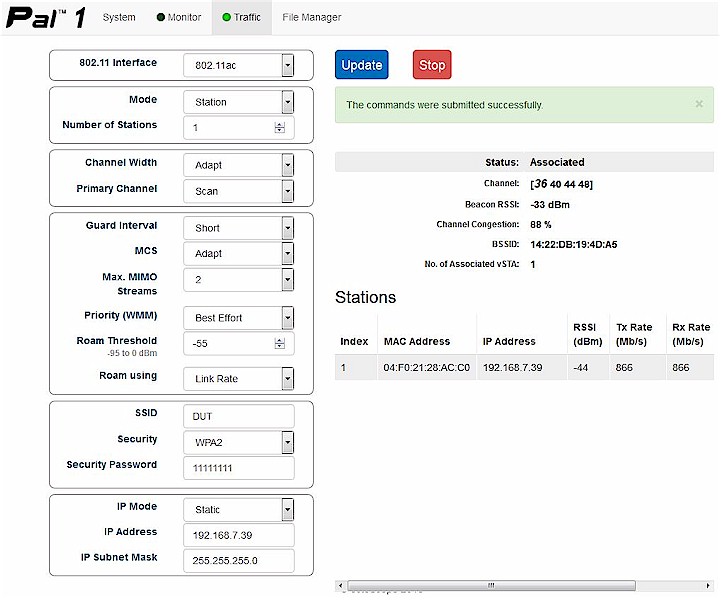- 2017
- -
- 05
- -
- 24
-
OctoScope推出最新的
SmallNetBuilder無線測試平台-第十版
SmallNetBuilder's Wireless Testbed - Revision 10
因Wi-Fi技術已有極大的進展,分散式Wi-Fi(DW)/網狀系統mesh systems越來越強大,已經挑戰了迄今形成消費者Wi-Fi市場基礎的單點式路由器(single point routers)。而MU-MIMO已推向低端產品市場,而這些產品缺乏可連接的天線端點,使我們目前的直接連接的測試方法變得不夠實際。另外,在過去一年中還發現多重的測試設定,會照成測試時間的增加以及更高的錯誤率。而分散式Wi-Fi(DW)產品的測試也會增加測試時間,所以精簡測試方法是必須的。
Introduction
The Wi-Fi landscape has shifted significantly since SNB's Wi-Fi test process was last changed only a year ago. Distributed Wi-Fi (DW) / mesh systems have come on strong, challenging the single point routers that have formed the bedrock of the consumer Wi-Fi market to date. And MU-MIMO has moved down-market into less expensive products that lack connectorized antennas, making our direct-connect test method less practical.The past year has also shown that having multiple test setups increased test time and was more prone to errors. The return to walking a laptop around to test DW products also increased test time. So some streamlining was in order.
The Revision 10 Testbed
We once again worked with our test partner octoScope to design the testbed for the Revision 10 process. The new testbed got moved up all the way to Revision 10 to line up with the name of the process it is used with.
The new testbed can handle both single point routers and DW products of up to three modules. The top box is unchanged; it's still octoScope's Box-38 anechoic RF test chamber equipped with turntable and four octoScope high-gain antennas. Below that, however, everything is new.
SmallNetBuilder Wireless Testbed Revision 10
The Multipath Emulator (MPE) has been replaced with octoScope's MPE2. The block diagram below shows that the multipath emulator can be bypassed to better model behavior in line-of-sight conditions. This also has the benefit of reducing path loss, which helps 5 GHz tests to reach higher maximum link rates. The built-in quadAttenuator has the same 63 dB attenuation range of the quadAttenuator modules. The ability to stack the MPE2's quadAttenuator with an outboard quadAttenuator provides additional attenuation needed to counteract the additional gain from the high-gain antennas that is not needed for 2.4 GHz testing.

octoScope MPE2 block diagram
Below the MPE2 are three new octoScope Box-18 RF chambers and a new TS (Test System) -MESH module detailed in the diagram below. The variable attenuation symbols represent octoScope quadAttenuators. The blocks marked 1:2 and 1:4 are octoScope RF splitter / combiners.

octoScope TS-MESH block diagram
The "Pal" blocks are octoScope's partner devices. Each can function in AP, STA or Monitor mode and support up to 32 virtual STAs. Each is based on an actual Qualcomm Atheros chipset, has an onboard processor and runs both an iperf3 server and IxChariot endpoint. The 4x4 models support from one to four transmit / receive chains, 20, 40, 80, 80+80 and 160 MHz channel bandwidth and 256 QAM. The 5 GHz version also supports MU-MIMO.
These single band Pals connect to the Box-38 and are used for throughput vs. attenuation and maximum throughput tests. The 3x3 version is a steerable dual-band device and does not support MU-MIMO. It connects to the three Box-18s and is used for DW / mesh testing.
A key feature of all Pals is they can report / log all the status information you see in the screenshot below including beacon and data RSSI, BSSID, channel congestion and transmit and receive link rates.
octoScope Pal web interface
Here's a physical view of the TS-MESH module. That's a TL-SG1008PE PoE+ switch powering the quadAttens and Pals in the TS-MESH. There is also a TP-Link TL-SG108E not shown that was added to power other octoScope modules and support network connection for other parts of the system.
News最新消息

